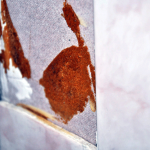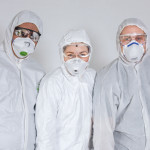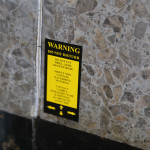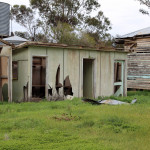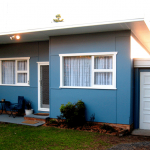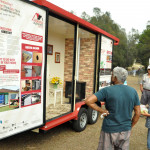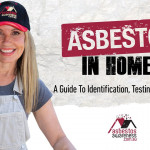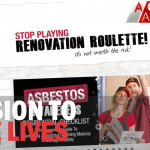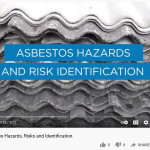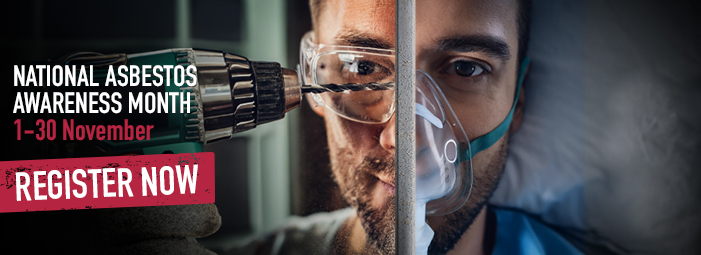TAS
Gallery & Videos
For a comprehensive range of images with descriptions of asbestos containing materials, visit the Asbestos Products Database.
Betty The Asbestos Education House
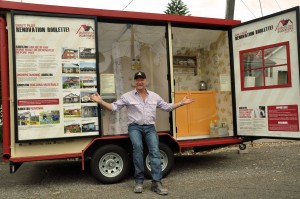
‘Betty’ – The Asbestos Education House is the first of her kind in Australia and the world, and is a community engagement and experiential awareness initiative of Insight Communications for the Asbestos Education Committee.
Betty is a purpose built, mobile model home designed to demonstrate where asbestos might be found in and around any Australian home built or renovated before 1990. Her exterior resembles a typical fibro home but when opened up, she has extensive audio and visual information including a bathroom, kitchen, living room, man shed/garage and a dog house.
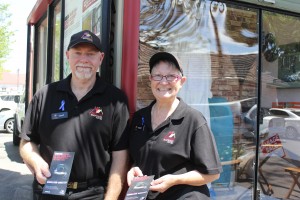
Betty’s mission is to educate all Australians about the dangers of asbestos so they think smart, think safe, think asbestosawareness.com.au, because it’s not worth the risk!
Her curators and chauffeurs, Geoff and Karen Wicks, are fully trained volunteers who enable her to educate the community as well as tend to her maintenance and upkeep. Geoff is a retired avionics engineer and avid DIYer!
From 2012 to 2017, Betty visited hundreds of communities around Sydney and regularly toured throughout NSW, primarily exhibiting at community events, council activities and DIY or renovation expos to educate Australians about asbestos dangers. Betty has also toured more
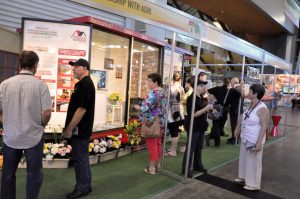
than 65,000 kilometres throughout every state and territory within Australia except WA.
Following Betty’s successful tour of Tasmania in 2017, Betty has been off the road since 2018 due to funding cuts. To help save lives, it is hoped that funding will soon be provided to ensure Betty and her dedicated crew can be back on the road spreading the word in the community about the dangers of asbestos and how to manage it safely.
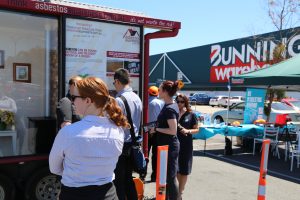
Between November 2012 and December 2017 Betty has:
- Had 244 public appearances
- Held 203 Media Call events
- Been displayed at 51 Bunnings Stores in NSW, Victoria, QLD, SA and NT
- V
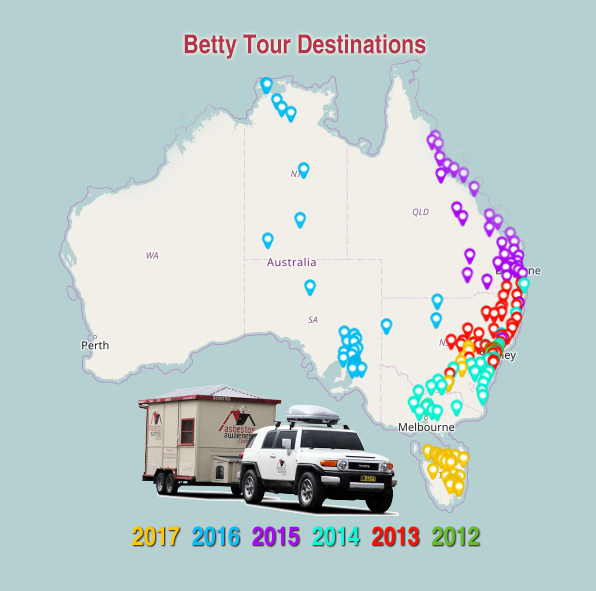 isited various community events including:
isited various community events including:
- The Sydney Royal Easter Show in 2013 and 2015
- The Sydney Home Show
- ADFA Memorial Day 2013, 2014
- AGQUIP
- AUSGRID & Endeavour Energy
- The Ballina Home Show
- Coffs Harbour Waste Conference
- Georges River Council’s Oatley Village Festival
- Hills Shire Council’s Creswood Fair
- Home and Garden Show Bowral
- Lithgow Council Annual Safety Day 2014
- The Living Room
- Mona Vale Markets
- NAIDOC Week Events 2013, 2014, 2016, 2017
- Parramatta Council’s Australia Day Celebrations at Parramatta Park
- The Royal Agricultural Society’s Camden Show, Parks Show and Condobolin Show
- Strathfield Spring Fair
- Tocal Field Days
Follow Betty on Facebook
To partner with Asbestos Awareness and become a sponsor of Betty and the vehicle that tows her, please contact us to request a Partnership Prospectus.
Betty Physical Stats:
- Weight: 1.42 Tonne
- Towbar Weight: 100kg
- Body Length With Draw Bar: 5.5m Long
- Body Length – Just House: 3.6m Long
- Width: 2.4m Wide
- Height: 2.9m Tall
- Power: 240v – also has her own generator
Asbestos Awareness Month
National Asbestos Awareness Month (1-30 November) is Australia’s leading multi award-winning asbestos awareness and community education campaign in the prevention of asbestos-related diseases.
With asbestos-related diseases continuing to increase among Australians as a direct result of exposure to asbestos fibres during home renovations or in the workplace; the importance of increasing awareness and educating Australians on how to manage asbestos safely in accordance with regulations cannot be overstated.
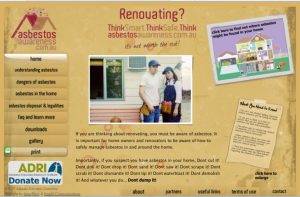
In 2011, we launched Asbestos Awareness Week in NSW with the first asbestosawareness.com.au website.
The week-long campaign held in the last week of November to coincide with Asbestos Awareness Day, was aimed at increasing awareness of the dangers of asbestos among homeowners and renovators to drive traffic to asbestosawareness.com.au where homeowners could access vital information on how to manage asbestos safely.
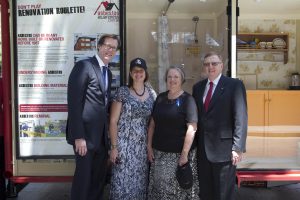
In 2012, Asbestos Awareness Week was rolled out as Australia’s first integrated national campaign.
The campaign aimed at engaging homeowners and renovators had been hugely successful in increasing the number of Australian’s accessing information on the website. However, research determined that although our week-long campaign continued to gain traction in engaging communities nationally; by extending the campaign to become Asbestos Awareness Month, we would engage a greater number of people to prevent asbestos exposure.

In 2013, we launched Australia’s first National Asbestos Awareness Month campaign.
Australia’s first National Asbestos Awareness Month achieved wide-spread awareness of the dangers of asbestos and provided more practical resources to help homeowners and renovators manage asbestos safely.
National Asbestos Awareness Month in the prevention of asbestos-related diseases.
Since 2013, we’ve continued to develop an extensive volume of user-friendly resources for homeowners. We’ve also expanded the scope of the campaign to include tradies, domestic and
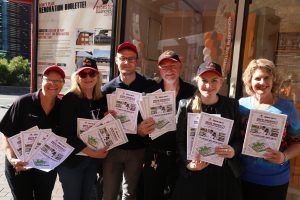
commercial property owners and managers, as well as those living and working in regional Australia
where naturally occurring asbestos exists.
By extending Asbestos Awareness Week to become National Asbestos Awareness Month we increased opportunities to advance community awareness and education in the prevention of asbestos-related diseases.
National Asbestos Awareness Month and asbestosawareness.com.au garners international recognition.

The National Asbestos Awareness Month campaign and asbestosawareness.com.au are internationally acclaimed by academics, researchers, asbestos support groups and industry leaders for continuing to successfully generate wide-spread community awareness of asbestos risks while providing accessible resources for homeowners, renovators, tradespersons and commercial, domestic and rural property owners and managers.
National Asbestos Awareness Month and COVID-19.
With the outbreak of the COVID-19 pandemic, community and workplace participation in National Asbestos Awareness Month has been severely impacted with organisations unable to hold asbestos awareness activities. Beyond COVID, National Asbestos Awareness Month will continue to actively engage communities and organisations in the prevention of asbestos-related diseases.
To participate in National Asbestos Awareness Month, register here to download free campaign resources.
Asbestos in the Home
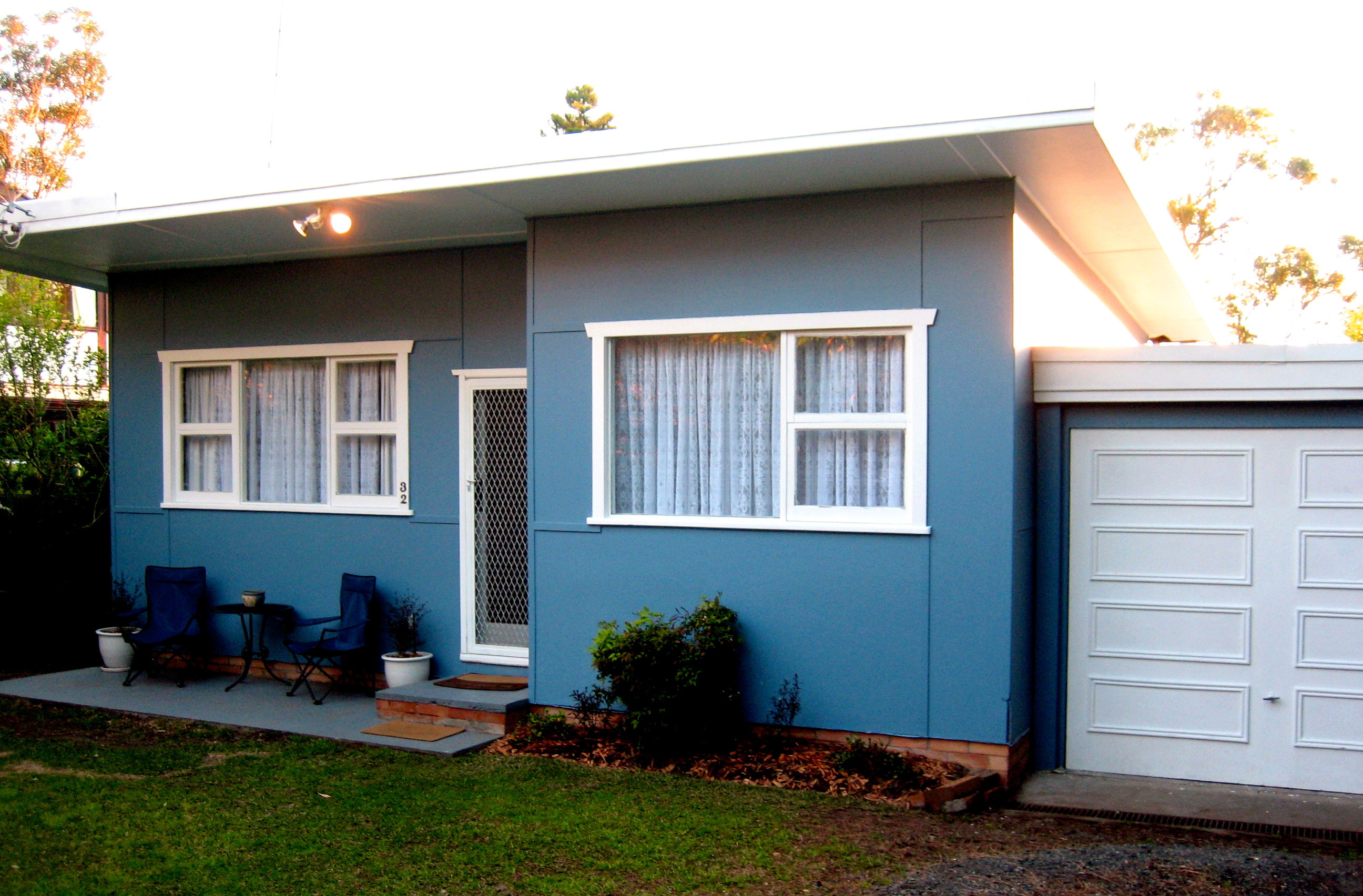 Asbestos fibres were used widely in thousands of building materials before the mid-1980s.
Asbestos fibres were used widely in thousands of building materials before the mid-1980s.
- If your home was built or renovated prior to 1987 it is ‘highly likely’ that it contains products incorporating asbestos.
- If your home was built or renovated between 1987 and 1990 it is ‘likely’ that it may contain some asbestos-containing materials.
- However, if your home was built or renovated after 1990 it is ‘unlikely’ that asbestos-containing materials will be present.
You may be surprised at the various types of products that were made from bonded asbestos cement included fibro sheeting (flat and corrugated), water drainage and flue pipes, roofing shingles and guttering – even the backing of vinyl sheet floor coverings.
The Residential Checklist is a visual guide designed to empower homeowners and renovators to develop a better understanding of the possible locations of asbestos containing  materials in and around homes, plus the knowledge to manage it safely. This practical guide enables homeowners to conduct a simple, easy to follow visual inspection of their property. By following the easy step-by-step instructions, in under an hour homeowners can have a better understanding of the types of products that might be in their home and if it’s in need of maintenance, repair or removal. Visit the Fact Sheets & Checklists page to access the Residential Checklist and additional pdf downloads.
materials in and around homes, plus the knowledge to manage it safely. This practical guide enables homeowners to conduct a simple, easy to follow visual inspection of their property. By following the easy step-by-step instructions, in under an hour homeowners can have a better understanding of the types of products that might be in their home and if it’s in need of maintenance, repair or removal. Visit the Fact Sheets & Checklists page to access the Residential Checklist and additional pdf downloads.
Asbestos 101 for Residential Property Owners, Managers and Tradies is an educational resource developed for anyone who might do work on residential properties. Developed in accordance with government Work Health and Safety Regulations and Codes of Practice, Asbestos 101 for Residential Property Owners, Managers and Tradies is a comprehensive resource that provides Australians with vital information as to why asbestos is dangerous; the risks of working unsafely with ACMs; the steps to take if they come across materials they suspect may contain asbestos; the safety procedures required for tradies who are working on residential properties; the importance of engaging an occupational hygienist or licenced asbestos assessor to confirm if asbestos is present; and, why it’s vital to only use licenced asbestos removalists to ensure hazardous asbestos materials are removed and disposed of safely in accordance with government regulations.
The use of asbestos was discontinued in all fibro sheets and products by the mid-late-1980s. After this, asbestos continued to be used principally in friction products, for brake and clutch linings. The manufacture and use of asbestos products was banned nationally in Australia from 31 December 2003. However, asbestos is still widely used in some countries. Despite being a prohibited import in Australia, goods containing asbestos are still being located at the Australian border. For more information visit the Australian Border Force website or download the Australian Border Force Fact Sheet on asbestos imports.
The Importance of Safely Managing Asbestos in and Around the Home
- Most people can’t tell whether building materials contain asbestos just by looking at them.
- Unless you take the required safety precautions and follow regulations, Don’t cut it! Don’t drill it! Don’t drop it! Don’t sand it! Don’t saw it! Don’t scrape it! Don’t scrub it! Don’t dismantle it! Don’t tip it! Don’t waterblast it! Don’t demolish it! And whatever you do… Don’t dump it!
- If you do need to work with any material that may contain asbestos, always work so there is minimal dust or small particles released from the asbestos materials. Download Fact Sheet 1 or 2 for instructions on how to do this.
- Only scientific testing of a sample of material by an accredited National Association of Testing Authorities (NATA) asbestos testing laboratory can confirm the presence of asbestos. For information on testing and accredited laboratories in your area, call 1800 621 666 or refer to their website at www.nata.com.au. When searching for an asbestos testing facility use a capital A in Asbestos.
- Asbestos materials that are in good condition are unlikely to release asbestos fibres if left undisturbed.
- If asbestos materials are in good condition, paint them and leave them alone.
- For detailed information download the handbook Asbestos – A guide for householders and the general public.
- For important information about working with asbestos read Safe Work Australia’s Model Code of Practice: How to safely remove asbestos July 2020.
Understanding Asbestos
 What is Asbestos?
What is Asbestos?
Asbestos is a naturally-occurring fibrous silicate mineral. It was considered a versatile product, because it is able to withstand heat, erosion and decay and has fire and water resistant properties.
It becomes a health risk when asbestos fibres are released into the air and breathed in.
Asbestos building materials is described as either “non-friable” or “friable”.
Non-Friable asbestos is any material (other than friable asbestos) that contains asbestos. Non- friable asbestos cannot be crumbled, pulverised or reduced to a powder by hand pressure when dry.
Common uses for non-friable asbestos in buildings include: flat (fibro), corrugated or compressed asbestos cement sheets; water, drainage and flue pipes; and floor tiles. To find out more visit the Asbestos Products Database.
If fire, hail, or direct activities such as water blasting and drilling damages bonded asbestos, it may become friable asbestos material.
Friable asbestos material is any material that contains asbestos and is in the form of a powder or can be crumbled, pulverised or reduced to powder by hand pressure when dry.
Friable asbestos was not commonly used in the home; it was mainly used in industrial applications such as pipe lagging, sprayed limpet and asbestos cloth and rope.
Friable asbestos can only be removed by a licenced asbestos removalist with a friable asbestos licence.
Find Out More About Managing Asbestos
Fact Sheet 1: Working Safely With Asbestos Around The Home
To learn more information about government regulations in your state visit:
Loose-fill asbestos found in homes in NSW and the ACT
Loose-fill asbestos was sold as ceiling insulation In the 1960s and 1970s, for residential and commercial premises mainly by one company trading in the ACT as Mr Fluffy. Most properties impacted are located in the ACT, a small number of properties in south east NSW have also been identified as containing this type of insulation.
SafeWork NSW is contracting an independent specialist to work with the NSW Heads of Asbestos Coordination Authorities (HACA) to help establish the scope of properties impacted by loose-filled asbestos ceiling insulation material and providing assistance to local councils and homeowners of impacted properties as well as workers who have the potential to disturb loose-fill asbestos insulation.
For information on loose-fill asbestos ceiling insulation material installed by Mr Fluffy during the 1960s and 1970s please contact Service NSW on 13 77 88 or visit the Loose-Fill Asbestos Insulation Taskforce page.
It is Important Everyone Knows About Asbestos Health Risks and Safety Requirements
- While some people may ensure they follow the regulations and safety requirements to remove small amounts of asbestos themselves, we recommend retaining a licenced asbestos removal professional who is equipped to protect you and your family from the dangers of asbestos dust.
- In Australia, a complete ban of asbestos and its products became effective in 2003.
- Most people can’t tell whether building materials contain asbestos just by looking at them. Only scientific testing of a sample of material by an accredited National Association of Testing Authorities (NATA) asbestos testing laboratory can confirm the presence of asbestos. For a NATA Lab List call 1800 621 666 or refer to their website at www.nata.com.au. When searching for an asbestos testing facility use a capital A in Asbestos.
- When working in and around the home or renovating, if in doubt, assume you are dealing with asbestos and take every precaution
- The safest way to manage the removal of asbestos is to hire a licenced asbestos removal contractor
- Where asbestos fibres are friable (loose and not bonded into building materials), only licenced friable asbestos removalists are allowed to remove it
- If you do need to work with any material that may contain asbestos, ensure you take all the necessary precautions to protect yourself and minimise the release of dust or small particles from the asbestos materials that may affect others including children


